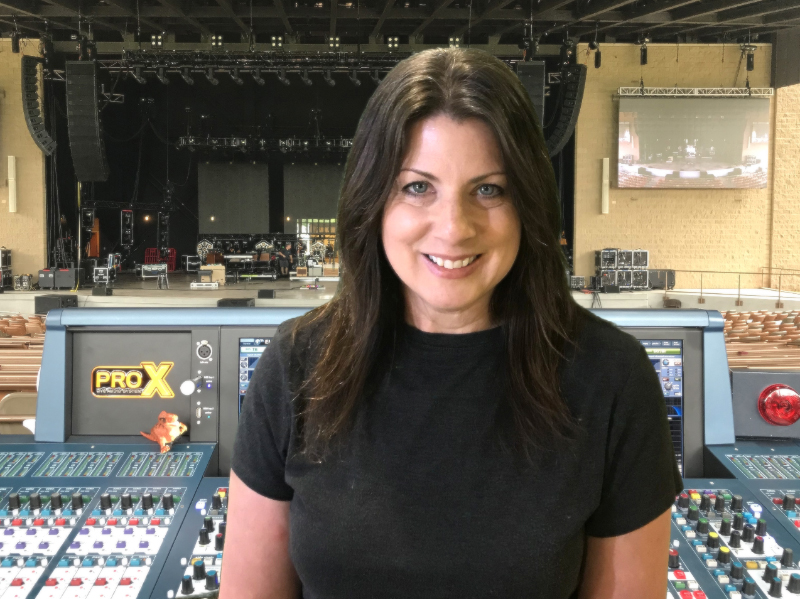
MSP: Learn the fundamentals like signal flow and gain structure, the actual craft of mixing and how to EQ, how to mix without plugins, and on any kind of system and desk. If you can pull a good mix together with whatever gear you’ve got in any kind of situation, you’ll be so much more valuable than someone who can only use one desk or can only make it sound good when you’ve got the best gear and thousands of dollars in plugins. Also, never treat people badly. You never know who or where your next gig is coming from and it’s a very small business.
And while we’re on the topic of education, I’d love to talk a little about MixingMusicLive.com. After years of meeting and mentoring aspiring sound engineers, one of the most common things I hear from them is how overwhelmed they are with how much there is to learn and not knowing where to start. Many are self-taught and struggling because they lack knowledge of the basic fundamentals, which is why I created the curriculum. It allows me to share my knowledge and experience with anyone interested in live sound and mixing or looking to improve their skills.
JY: Everyone be sure check out Michelle’s website! Let’s detour a bit – what brings a smile to your face when you’re out there for months on tour? Since we’re all taking a “mandatory respite” from touring right now, as you think back fondly on previous summers, what part of your job on a typical summer show day do you like the most?
MSP: Mixing the show. It’s all about the music for me. I love my road family, the camaraderie of being on tour, getting to meet new people and travel to new places, but in the end it’s all about the music and the art of mixing. During the show when I’m mixing, I’m in the zone. It’s almost like meditating for me.
JY: OK…here it comes, and it has to be asked: Analog or digital on tours and one-offs? And share your thoughts on what you’d like to use as opposed to what you end up using, as well as the reasons why?
MSP: Oh, you did your homework, didn’t you? (Laughs.) I think it’s pretty well known I’m an old analog girl who went kicking and screaming into digital, and I fought it for as long as I could.
When the industry first started moving towards digital I detested it. The sound quality was so poor that I couldn’t make the sacrifice for the convenience. I could see the benefits for certain types of shows, but for me and the kinds of artists I mixed, I just couldn’t justify giving up the big, fat warmth of a great analog desk like a [Midas] XL4 or [ATI] Paragon for a digital desk.

A funny story about that – I’d been touring with an XL4 for years and when the [Yamaha] PM5D and Avid [VENUE] first came out and were all the rage, the stage hands would complain about me bringing in this monstrous behemoth that would require eight people to lift. I would hear comments all the time like, “You know they make these digital consoles now that only take two guys to set up!”
A few years later I was mixing Melissa Etheridge on a theater tour and we had XL4s at both ends of the snake (Jon Schimke was on monitors). The same stagehands who chastised me for continuing to lug around my big old analog desk had changed their tune. Now they were saying, “Wow, we haven’t seen one of these in a long time! It’s so good to have a real board in here!” They’d heard all the shows and noticed the difference in the audio quality between digital and analog – that and the fact that they realized that not needing eight people to set up the console had reduced their labor calls!
Sure, you can add a bunch of plugins to improve the sound of digital consoles, but I’ve always been a “use the right tool for the job and less is more” kind of girl. I shouldn’t have to add thousands of dollars of plugins to a desk for it to sound acceptable to me. The other thing about analog is you have everything in front of you all the time. No scrolling through pages and layers to get to what you need – I can mix with both hands!
Digital has come a long way, and while it’s still not the same as analog, there are some significantly better-sounding desks. For the past several years now I’ve been mixing on digital (Midas PRO X), due mostly to the needs of the production – things like truck space, FOH space and such. When I was hired to mix Elvis Costello last year, I wanted to go analog but the show is upwards of 80 inputs and logistically it didn’t make sense, nor did we have the truck space for it.
A well-kept and maintained XL4 or Paragon is my dream console. Either of those and a couple of Empirical Labs Distressors, dbx 160 compressors (the original with the VU meter), Aphex gates, and some TC and Lexicon reverb is my dream rig.
Unfortunately, it can be difficult to find all of that gear in proper working order these days. But with that in your sandbox you can plug in nothing but a bunch of [Shure] SM57s and 58s and have an amazing sounding show.
